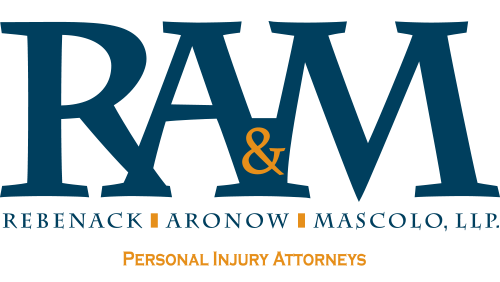The Most Common Fall Road Hazards
If you take a motor vehicle trip during the fall months, you will most likely encounter a few road hazards, although some may be more prevalent than others depending upon the part of the United States that you are traveling through. In this guide, you will learn what they are and how they can cause a vehicle accident.
1. Children and Inexperienced Drivers
When fall begins, you should always drive carefully in and around a school zone. Motorists need to be aware of middle school kids, their younger siblings, and teen drivers who are just learning the rules of the road.
2. Darkness
According to the National Safety Council, there are more risks on the road when Daylight Saving Time ends. If a road has no street lights, some drivers will have limited:
- Color recognition
- Depth perception
- Peripheral vision
The National Safety Council and the American Optometric Association found that older drivers often face more challenges because their vision is less sharp at night.
3. Hydroplaning
If a vehicle hydroplanes, it will tend to skid or slide. Hydroplaning occurs when a tire is unable to generate friction on the road.
When a tire hydroplanes, you should use the vehicle’s brakes and slow down. Don’t jerk the steering wheel because the vehicle may veer in the opposite direction.
4. Tire Blowouts
Low pressure can cause a tire blowout. When the pressure is too low, the rubber on the tire will bend beyond its normal limits. Then, the treads will overheat until they lose their grip.
The Federal Motor Carrier Safety Administration monitors semi-truck tire blowouts and finds that tire blowouts cause nearly 5.6% of all semi-truck accidents.
The National Transportation Safety Board tracks traditional tire blowouts in the United States. According to the board’s reports, these blowouts cause up to 33,000 collisions each year.
Non-commercial vehicles can roll over after a blowout as well During a national study, a team found that 45% of SUVs with pre-crash wheels could roll over immediately after a tire blows out.
When another driver’s tire suddenly blows out, keep your distance. You must give the driver an opportunity to reach the edge of the road safely.
Big rig trucks are heavier than traditional vehicles, so semi-truck drivers must follow different steps to protect others on the road. Typically, a semi-truck tire will blow out if a driver:
- Installs the wheels incorrectly
- Performs inadequate inspections
- Overloads the truck
- Has defective tires on the truck
5. Fender Benders
Fender benders are usually caused by distractions. They often happen in front of stop signs and traffic lights. The impact from a fender bender can completely destroy a front or rear fender and the headlights on a vehicle.
A small percentage of drivers will collide into a front bumper. Rear fender benders are more common because they usually occur when a driver:
- Fails to use brakes in stop-and-go traffic
- Accidentally bumps a parked car in a parking lot
- Makes poor decisions in moving traffic

You can prevent a fender bender if you stay focused on the road. As mentioned earlier, distracted drivers cause fender benders, so stay away from any driver who appears to be multitasking behind the wheel.
A very alert driver who drives recklessly could also cause a fender bender. In these situations, every second matters because you’ll only have moments to react to danger. When you have these encounters, give yourself time to respond by applying the two-second rule.
6. Fog
On a foggy fall day, thick mist can conceal other cars, pedestrians, and traffic lights. If your community gets heavy fog, always weigh the risks before you take a trip during the day or night.
The Federal Highway Administration runs the Road Weather Management Program. During a 10-year study, the group found that extreme weather conditions like dense fog have caused roughly 21% of all highway accidents. The Federal Highway Administration studied the effects of fog for 10 years because it can:
- Limit a driver’s capabilities
- Change a driver’s road treatment strategy
- Cause a major pile-up
For safety reasons, you should stay off the road when fog is in the forecast. If you have to travel through fog, drive slowly, and remain in one lane until the fog clears. Don’t change lanes unless you have to.
7. Bike Accidents
The weather in most states is very pleasant in the fall. The biking community appreciates wonderful autumn weather because it’s very refreshing during a bike ride. However, some riders can be very unpredictable on the road. These preventative measures will help you safely share the road with all cyclists.
If you encounter an unpredictable cyclist, keep your distance. Also, pay attention, and keep your foot close to the brake.
When you’re parked, a cyclist could accidentally smash your driver-side door, so always scope the surroundings before you open it. If you push the door open with your right hand, you’ll automatically look over your shoulder.
8. Animals
In rural areas in some parts of the country, deer are a threat. If a timid deer steps in front of your car on a highway at night, it will panic. A buck’s body is very dense, so it could cause a great deal of damage to your vehicle as well as to you and your passengers.
If a buck jumps directly in front of your car, use the brakes. Don’t try to swerve around the animal because you might lose control of the vehicle. If this happens, you may collide into another car or a tree.
9. Big Rigs
Unlike a traditional vehicle, a semi-truck doesn’t have an expanded rear view. As a result, a semi-truck driver has to make very calculated decisions behind the wheel.
Local pedestrians can help change the statistics if they follow a few tips. The first step is to wear reflective gear at night to stand out. Flashlights are very effective too. Never point a bright flashlight directly at oncoming traffic; always point it at the ground.
If a semi-truck collides with your vehicle, you could file a lawsuit with the assistance of a trucking accident attorney. You could have a viable claim for compensation if you were hit by a:
- Distracted truck driver
- Reckless truck driver
- Impaired truck driver
10. Potholes
A pothole is a double threat. If your car drops into a pothole, the impact can damage your suspension and shocks, and the momentum could make you lose control of the vehicle.
11. Glare
While you are behind the wheel, you must know how to react to glare. A mild glare could blur your vision, and an intense glare could cause temporary blindness. When sunlight is reflecting off your windshield, drop the sun visor until the glare is gone. If you don’t see beyond an oncoming vehicle’s headlights, focus on the edge of the road until the automobile passes.
12. Leaves
One of the most obvious causes of driving difficulties that occurs specifically during the autumn months in many parts of the country is the falling leaves that can cover the tree-lined roads. When leaves begin piling up and there is rain or fog, the normally lovely foliage creates a slick covering that lessens traction no matter how new your tires are.
In addition to making the road more slippery, leaves also cause drivers and pedestrians to change their paths. Pile of leaves along the edge of the road push drivers and bicycle riders closer to the center line.
Leaves can also obscure road markings and hide dangerous potholes. Drivers should be aware that any time they drive through leaves that there could be something underneath, including a small animal.
A motor vehicle accident can be very financially stressful for a victim. If you need an attorney for a case in New Jersey, contact RAM LAW at (732) 394-1549.


